Wingtech will pursue all legal options regarding Nexperia: November 21, 2025

Wingtech says it will pursue all legal means to regain control of Nexperia. Since the Dutch government’s seizure, Wingtech has repeatedly called for the reinstatement of former Nexperia CEO and Wingtech founder, Zhang Xuezheng.
The company has also accused the Dutch authorities of “initiating and driving the legal steps that resulted in the loss of its voting rights at Nexperia, and has urged the government to withdraw its role and backing for the process.”
A judicial court has recently revoked the shareholder rights of Wingtech, leaving “management and voting powers in the hands of a court-appointed administrator.”
Legal analysts weighing in on the situation say it could take years to resolve, possibly exceeding the typical 2 years, if there are multiple appeals or altered governance structures. Wingtech could take this case to the Dutch Supreme Court, but that would be more procedural questions rather than the events of this ongoing dispute.
Dutch Economy Affairs Minister Vincent Karremans hoped the dispute could be resolved with his delegation, but with no agreement reached, he will likely have to play a larger role.
Automakers and other Tier 1 suppliers are seeking alternative suppliers, whether through competitors or other workarounds. So far, there have been no significant disruptions since China began exempting Nexperia shipments; however, with the lack of wafer supply, the Dongguan Nexperia facility will likely be unable to keep up with demand or adhere to Nexperia’s quality processes if it procures wafers from domestic providers. That uncertainty is troubling many suppliers.
It’s advised that organizations continue to secure a stable supply of alternative parts as the Hague and Beijing continue their talks.

China demands more practical actions in Nexperia situation: November 20, 2025
China is still not yet satisfied with the Nexperia standoff. While acknowledging the Dutch government stepping back, relinquishing its controls under the Goods Availability Act, it demands more action to reach a resolution. China’s commerce minister told Britain’s Secretary of State for Business and Trade, Peter Kyle, in a call that the Dutch government’s order to remove Nexperia’s former CEO and Wingtech founder, Zhang Xuezheng were the root cause for the turbulence.
As China calls for more “practical actions” to resolve the situation, U.S. lawmakers are demanding a formal probe into the firms potentially supplying Dongguan’s Nexperia facility. Raja Krishnamoorthi in the U.S. House, has publicly requested a government investigation into four Chinese firms that may be supplying Nexperia, citing national security concerns. That inquiry, if pursued, could identify additional entities subject to sanctions or restrictions or trigger further scrutiny of supply chains linked to Nexperia.
Nexperia’s parent company, Wingtech, is on the entity list, which some argue kicked off the Dutch government’s seizure, though the government denies this. Wingtech has also publicly reiterated that its control over Nexperia must be restored, increasing uncertainty.
"Wingtech Technology will never accept any attempt to 'legalize' illegal outcomes, nor will it accept a 'new normal' of Nexperia's equity and governance created through illegal procedures," it said in a statement.
Industry coverage on the situation shows that while automakers are pursuing plans to return to full production, they are also accelerating alternate sourcing. Most are hedging in anticipation of more politically driven twists.
A U.S. probe into upstream Chinese suppliers could broaden the set of firms facing export or trading restrictions. That could potentially constrict access to critical inputs even if Nexperia itself is administratively “open” for trade. It could also be seen as provoking China after the temporary truce in early November.
Likewise, Wingtech’s demand for restored control keeps the underlying corporate governance dispute unresolved. Ongoing diplomatic activity may enable selected flows, but renewed political pressure could produce fresh constraints.
While China’s public push against the Dutch government could ultimately help restore flows, the prospect of a U.S. probe and Wingtech’s insistence on restored control mean uncertainty will remain high for the near term. Procurement and operations teams should treat the situation with caution.

The Netherlands walks back Nexperia controls: November 19, 2025
Today’s update materially changes the immediate risk profile for Nexperia-related supply chains. The Dutch government has suspended the control measures granted under the Goods Availability Act and lifted the formal takeover order for Nexperia. A promising sign after China announced it would reopen exports of Nexperia components. Multiple outlets report the move as coordinated with diplomatic engagement and framed as a gesture to stabilize global chip flows.
Beijing has welcomed the move, saying it “was a first step in the right direction towards a proper resolution.”
Dutch Economic Affairs Minister Vincent Karremans said it was the right move to suspend the government’s actions ahead of further talks with the Chinese government. The recent step back by the Dutch government was announced earlier last week, when Karremans said the Netherlands would suspend the controls under the Goods Availability Act once Nexperia's exports were confirmed to have shipped. Since then, they have, and the Netherlands has followed through on its promise.
"We are positive about the measures already taken by the Chinese authorities to ensure the supply of chips to Europe and the rest of the world.”
Following the reversal, Beijing approved of the move but said it was "still a step away from addressing the root cause of the global semiconductor supply chain turmoil and chaos.”
"Furthermore, the erroneous ruling by the corporate court, spearheaded by the Dutch Ministry of Economic Affairs, to strip Wingtech of its control over Nexperia remains a key obstacle to resolving the issue.”
Meanwhile, Nexperia's owner, Wingtech, has said it will fight the decision. A company spokesperson stated that the company continues to firmly reject the allegations of its CEO.
"To date, no proof has been provided. If the Dutch government is sincere about solving the problem, the Ministry should now file a letter with the Enterprise Chamber, explicitly withdrawing its support for the proceedings.”
The spokesperson continued, "These proceedings form a threat to the continuity of Nexperia B.V. and therefore to the economic security of the Netherlands and Europe, which is the exact same argument the Dutch government made previously in support of judicial intervention."
Likewise, according to the Associated Press, there are still ongoing arguments over the wafer supply. The public framing from both sides emphasizes a conditional de-escalation rather than a full, unconditional settlement. Operational freedom will hinge on administrative follow-through.
Near-term risk has been reduced, but disagreements persist, meaning that the danger has not yet fully passed. Automakers and Tier-1s that had deferred or curtailed assembly runs will see relief as parts trickle back in, but rebuilding consumed parts will take some time. That’s all if talks continue in a positive direction.
Continued attention to diplomatic signals will be essential: political will enabled this reopening, and continued management will determine whether it becomes a durable resolution or a temporary reprieve.

Automotive industry grapples with chip crunch: November 18, 2025
The disruption continues as companies eagerly await talks between the two countries. Automotive parts maker Bosch is reportedly grappling with disruptions after being cut off from Nexperia components. According to sources, thousands of workers have been impacted.
“We can currently confirm that production at the Ansbach, Salzgitter, and Braga plants continues to be affected,” a company spokesperson told Reuters.
“We are continuing to prioritize everything we can to serve our customers and avoid production restrictions or keep them to a minimum.”
As the parts crunch continues, Bosch has been sending workers home when necessary. Bosch is using state-backed furlough measures in Germany as needed, with a total of 650 workers furloughed at the Salzgitter site and 2,500 at the Ansbach site. In Portugal, at the Braga site, 2,500 of the total 3,300 employees have been impacted by temporary working-time adjustments or furloughs.
Meanwhile, some automakers are taking a step back, signaling that pressure is easing. Honda, which cut back production at its North American plants, is gradually resuming normal operations. A spokesperson said that Honda has “secured a certain level of chip supply, such as by sourcing alternative components. Next week’s planned return to regular operations could change as the situation stays fluid.”
Like late last week, the situation remains extremely fragile. Automotive suppliers continue to seek alternatives while awaiting their export-exempt shipments, but supplies could run out soon if talks between the two governments don’t yield a positive outcome.

ASML encourages talking between Beijing and The Hague: November 17, 2025
Workarounds, insults, and hopes of a solution are the news of the day regarding Nexperia. Last Friday, China and the Netherlands traded barbs, with the former expressing disappointment over Karremans’ comments that he did “not regret” the seizure of Nexperia’s ownership and the resulting fallout. Ongoing criticism between the Chinese and Dutch governments has been a common thread in the Nexperia situation, and, unexpectedly, colored the days leading up to the meeting between Beijing and The Hague.
As the global supply chain awaits the meeting of the two delegations, ASML Holding has weighed in on the matter.
“The ecosystem is fragile,” ASML’s Chief Executive Officer Christophe Fouquet said on Dutch TV program Buitenhof. “What is key on this topic is to talk before you escalate, and maybe this time it went the other way around. There’s a lot at stake.”
Tensions continue, but according to Fouquet, they won’t impact ASML, the leading producer of advanced semiconductor manufacturing equipment. However, the impact on ASML is likely not as dramatic as on the automotive industry.
In comparison, the automotive industry has shared far more negative outlooks. “Our plea is that Nexperia China and Nexperia EU come together and actually start to resume normal operations because what’s happening is just inexplicable, and it is devastating for hundreds of industries,” warned one automotive executive.
For now, companies are waiting for the resumption of Chinese shipments and verifying alternatives while awaiting the meeting between the two countries’ delegations.
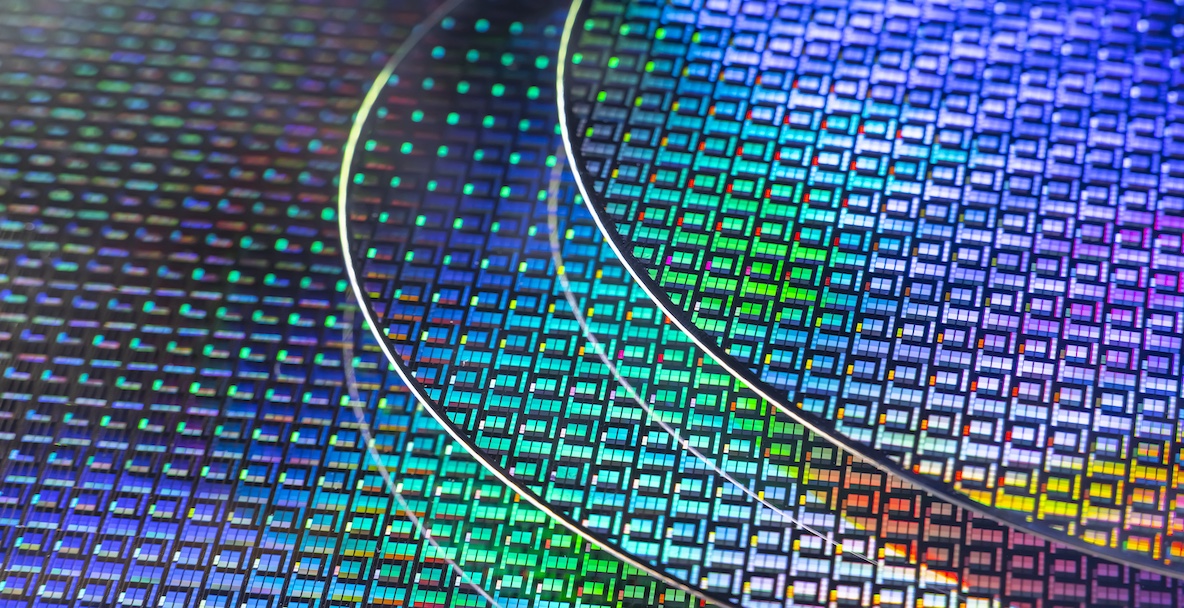
Dongguan Nexperia wafer supply could run out soon: November 14, 2025
The Nexperia situation continues its Dr. Jekyll and Mr. Hyde routine. Yesterday, there was progress as Dutch Economy Minister Vincent Karremans announced that a delegation representing his office would visit Beijing to discuss solutions next week. However, today, the mood is a lot fierier as the wafer supply timeline shortens.
Industry forecasters warn that wafer inventories for Dongguan could run out by mid-December, unless flows are restored or alternative wafers are sourced. Automakers and other Nexperia customers have been discussing an alternative solution for purchasing Nexperia wafers from European plants and then sending them to Dongguan for packaging. That way, they’d get the parts they need without having to sacrifice quality. However, the window is much narrower than companies or policymakers would like it to be.
China’s commerce ministry has once again publicly criticized the Karremans' most recent comments in defense of the government's seizure of Nexperia. The ministry went on to say it was “extremely disappointed and strongly dissatisfied with Karremans' comments.” The ministry went on to list numerous complaints against the Dutch government’s actions, urging the Hague to bring constructive proposals to the upcoming talks.
"It was the Dutch side’s improper intervention — seizing 99% of the shares of a wholly owned private enterprise — that, like a stone thrown into calm waters, created a huge ripple effect and became the real source of turbulence and disruption to the global semiconductor supply chain," the ministry said.
Likewise, the letter also mentioned Dutch-installed Nexperia CEO Stefan Tilger’s internal communication to employees on November 12. While the content of the letter has not been disclosed, the Chinese team has commented on it, saying it “distorted the facts and attempted to confuse the issue, which fully reflected the attitude of certain members of the management team at Nexperia Netherlands, who are shirking responsibility and disregarding the vital interests of all employees at Nexperia China”.
Nexperia China went on to state that it was “actively pursuing production self-rescue.” It strived to maintain the orderly development of all production and business operations, while cooperating with the Chinese government’s requirements to resume exports for civilian purposes.”
Despite breathing a sigh of relief when China agreed to allow some exemptions for Nexperia exports, this latest disruption of geopolitical origin has spooked carmakers. Bloomberg reports that European automakers are exploring ways to eliminate parts made in China.
Matthias Zink, the president of Europe’s leading suppliers' lobby, CLEPA, and head of Schaeffler AG’s powertrain & chassis division, spoke on the issue.
“We had some indications already — questions like, ‘how can you supply me without this dependency on China?’”
Any meaningful recalibration of sourcing components outside of China will take time, with an estimated timeframe of three to seven years, depending on the component, according to Zink.
“We should have no illusions on this,” he said. “Replacing Chinese battery cells and refineries is going to be difficult for decades.”
The Dutch delegation’s upcoming talks with Chinese officials are critical for restoring stability within the discrete component sector. However, the ongoing bickering between the two countries leaves many concerned about the feasibility of a quick solution.

Dutch delegation to travel to Beijing to discuss Nexperia: November 13, 2025
Shipments have restarted, but the chip industry isn’t out of the woods yet. Talks between the countries are ongoing, with a planned visit by a Dutch government delegation early next week. Dutch Economy Minister Vincent Karremans said that representatives from his office will work with Beijing to find a mutually agreeable solution.
Karremans said that he welcomed recent moves by China to loosen the rules around Nexperia’s chips, but “is still monitoring the situation to ascertain if and when trade from Nexperia's facilities in China is fully resumed."
While acknowledging that the current solution is helping to ease the supply chain, a collaborative effort is needed on both fronts. One of the Dutch government’s requirements for moving forward is to ensure Nexperia’s independence through the establishment of an independent supervisory board, and that Zhang Xuezheng, the founder of Wingtech and former CEO of Nexperia Netherlands, can no longer act as both CEO and head of human resources.
It will be interesting to see how these talks play out as Karremans states that while this is a sobering lesson on the dependency on China, he has “no regrets.”
In an interview with the Guardian, Karremans explains that “if Wingtech had moved its semiconductor wafer production to China, then this interdependence that Europe had [with China] would have changed into a full dependency. That … would have been very dangerous for Europe.”
Karremans notes that even with the delegation going to Beijing to discuss next steps, nothing will happen until the first chips arrive on European shores.
“We are in direct touch with the German car industry and with other car manufacturers and clients of Nexperia. They will let us know when they receive the chips. And once the supply resumes and we are confident it will continue, then … we’ll take the appropriate steps that are needed by the Dutch government to resolve this issue.”
Meanwhile, automakers and other Nexperia customers remain deeply concerned about part availability. While many automakers were excited when China agreed to allow certain exemptions, wafer shipments to supply the Dongguan plant have not resumed.
Acea, which represents EU carmakers, said, “We welcome the Chinese announcement lifting export controls. But we will not have enough chips to meet global demand as long as there are restrictions on the export of wafers to China. We are moving in the right direction, but it is not solved yet.”
To continue production, many are discussing a workaround to circumvent the ongoing feud. According to Reuters, the previously unreported, temporary solution is not feasible for smaller clients, but could relieve some pressure.
Clients are working with Nexperia Europe to purchase silicon wafers directly from its Hamburg plant, separately transport them to China, and contract the Dongguan plant for final packaging. Reuters stated that it could not determine which customers were in discussions about the workaround, or if it had even begun.
The article goes on to say that by treating Nexperia China and Nexperia Europe as two separate entities, one for production and the other for packaging, it would temporarily address quality concerns presented by the latter. Each unit would be paid for its work.
Another solution, according to sources, is purchasing alternatives made by competitors like STMicroelectronics and Onsemi, as companies have been doing. This would be a longer-lasting solution; the only struggle has been the lack of availability as organizations buy alternatives.
As previously stated by automotive leaders, high-level negotiations will be required to resolve the situation. The outcome will hinge on the success of the Dutch delegation’s discussions and the speed at which customers can operationalize alternative routing and qualification plans.

China asks Germany for help with Nexperia: November 12, 2025
Last Sunday, China moved forward with its plans to allow exemptions for export controls on Nexperia chips intended for civilian applications. The Chinese Commerce Ministry was the regulatory body to make this announcement. Soon after, Volkswagen’s Chinese unit chief said that it had received its first deliveries of the needed chips.
These procedural relaxations are selective, not a blanket reopening, but a much-anticipated step in the right direction. Following Nexperia’s seizure by the Dutch government, companies and countries alike have been vocal about the strain that the loss of Nexperia chips has had on the discrete semiconductor market. Automakers, in particular, faced the brunt of the disruption, as dozens of Nexperia parts can be used in the production of a single vehicle.
While not at the leading edge of semiconductor technology, Nexperia’s components are used in many long-lived technologies, such as cars, that require simple components that can perform a function for years, if not decades. It’s why automakers were quick to set up their own war rooms to monitor the situation the moment China slammed the gate down on Nexperia exports.
It’s why China is encouraging Germany, the home of many well-known automakers, to push the Netherlands into revoking its claim on Nexperia. Despite remarks last week that the Netherlands would release its hold on Nexperia if shipments resumed, recent statements from China have sparked a fresh wave of concern.
"(China) hopes Germany will play an active role in urging the Dutch government to take practical steps as soon as possible to correct its erroneous practices, revoke the relevant measures, and promote an early resolution of the issue," Wang told Katherina Reiche, Germany's minister for Economic Affairs and Energy.
In a recent report by Reuters, Dutch Economic Affairs Minister Vincent Karremans stated in a press release late on Tuesday that “the Netherlands and the EU will work together to repair supply chains as quickly as possible."
However, Karremans' office declined to address China’s recent urging, but said the state intervention did not target Nexperia's day-to-day operations.
It "only demanded continuity of production and supply for Europe, following fears operations would be moved to China,” a spokesperson for Karremans’ office said.
While the frantic desperation for parts has lessened since Beijing granted exemptions to its export controls, tensions over the company's ownership and operations remain. A breakdown in negotiations could easily lead to another shortage if exemptions are revoked.
"Ensuring the long-term stability of the global semiconductor supply chain requires the Dutch side to demonstrate a constructive attitude and take concrete actions," Wang said.
Volkswagen states that it is still verifying and exploring alternatives, rather than waiting exclusively for a return to normalcy. A step most organizations should take, as talks could break down without warning. Likewise, the commercial impact from last month is already taking effect.
Honda has trimmed its profit outlook, citing a mix of tariffs and supply-chain disruptions tied to the Nexperia fallout. While shipments are restarting for some buyers, production and financial performance are expected to continue being affected in the near term. Even approved shipments will be subject to customs, certification, and traceability checks, which can slow production.
Watch the market for updates and maintain alternative channels. Keep parallel sourcing and qualification processes active; do not cancel substitute qualifications or contingency purchase orders.
The immediate supply picture has improved from its most acute phase. Select Nexperia shipments are resuming, and China has signaled targeted easing, but the recovery is only partial, not complete. Buyers should use this window to secure a verified supply and preserve contingency options while closely monitoring diplomatic signals.

Tensions ease as Nexperia chips start to ship: November 7, 2025
The Nexperia standoff is moving toward a fragile de-escalation after an intense week of arguments and accusations. Dutch Minister Vincent Karremans of Economic Affairs stated on November 6 that chips would be delivered to Nexperia customers in the coming days. On November 7, anonymous sources shared how this resolution will come to fruition.
In a report by Bloomberg, the Dutch government announced it was “ready to shelve the ministerial order that gave it power to block or change key corporate decisions at Nexperia, if China allows the export of its critical chips again.”
Bloomberg went on to say that “If the shipment of supplies resumes and is verified in the coming days, the Dutch are willing to revoke its powers as early as next week.”
In the same article, it was clear that the division had been long in the making. Nexperia management had reached out to the Dutch government for help in late 2023, due to a “perception problem.” Following Wingtech’s inclusion on the entity list, the U.S. calls for the Netherlands to oust the CEO to avoid trade restrictions, and here we are.
After receiving its export license from China within a quick turnaround, Aumovio SE, a parts manufacturer that supplies Volkswagen, Stellantis, and BMW, has shipped Nexperia parts, according to Chief Executive Officer Philipp Von Hirschheydt.
Von Hirschheydt added that “he was informed that China’s Ministry of Commerce lifted the broader Nexperia export ban on Friday.”
What this means operationally is that some backlog and emergency orders should begin to clear, easing the most acute pressure on automakers. However, the restart is being managed administratively and selectively, so expect a phased ramp rather than an immediate normalization. Shipments will not instantly meet all outstanding demand, and lead times will remain elevated through the next several weeks as logistics and customs processes catch up.
“It will take some time before all procedures and processes will get back to normal,” said Von Hirshheydt. “There’s still a chance for disruptions in the next four to six weeks, but if everything I know today is correct, we are not going to be affected.”
A spokesperson from Volkswagen echoed these sentiments on Friday. Ralf Brandstätter told the Handelsblatt newspaper that the Chinese Commerce Ministry had announced it would grant temporary exemptions.
"The first exports have already taken place. How quickly and sustainably this system works depends primarily on the stability of relations between the US and China."
The immediate crisis risk has eased from “critical” to “contingent.” Diplomatic progress and the administrative reopening of exports have alleviated the prospect of an indefinite shutdown of China-origin Nexperia supplies for the rest of 2025.
However, recovery will be uneven and based upon further political and procedural developments. Sourceability encourages customers to continue confirming part-level eligibility while treating any China-packaged inventory as tentative until it is fully traceable and certified. Likewise, organizations should continue to prioritize high-value production runs while the market stabilizes.
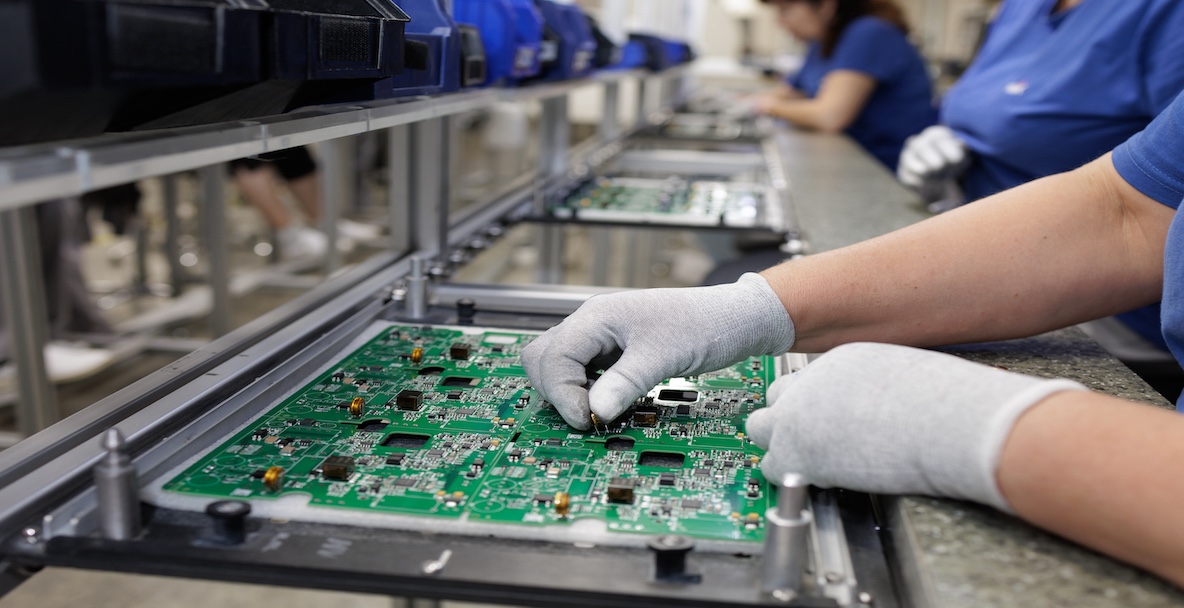
Karremans says chips will reach world soon: November 6, 2025
Late last week, Nexperia’s Dutch unit announced it had suspended wafer shipments. The reason behind that suspension wasn’t outwardly stated until recently. Nexperia’s Dutch unit alleges that the Chinese unit refused to pay for the wafer shipments and, following that breach of contract, it stopped shipments.
The statement went on to say that “the refusal to pay for the wafers was not a one-time situation…Corporate seals belonging to the China entities were taken and used without valid approval.”
Nexperia’s Dutch unit went on to say that the China unit established “unauthorized bank accounts and directed customers to make payments to those accounts instead of approved corporate channels.”
Despite the positive news over the weekend regarding export curbs, there is no clear way forward with the current Nexperia division. Dutch management states that while it “appreciates the commitment toward restoring supply chain flows…it has not yet received the necessary details of how and when export curbs will be lifted.”
Nor, for that matter, do these export control curbs have any impact on the ongoing payment disagreement. However, Dutch officials say that the light at the end of the tunnel might be far closer than recent headlines suggest.
The Netherlands has once again invoked the Goods Availability Act to ensure the continued production of Nexperia’s semiconductors.
"Given the constructive nature of our talks with the Chinese authorities, the Netherlands trusts that the supply of chips from China to Europe and the rest of the world will reach Nexperia’s customers over the coming days," said Dutch Minister Vincent Karremans of Economic Affairs.
While Nexperia has halted wafer shipments to its Dongguan plant, management has assured customers that it will continue to supply other facilities with the necessary supplies to maintain production. TrendForce additionally reports that Nexperia has refused to guarantee the quality of China-assembled chips after October 13th.
Since a significant portion of Nexperia’s finishing capacity is located in China, it will take time for other sites outside of Dongguan to fill the gap that has been left behind. However, with the promise of chip production, this should allow the supply chain to breathe a little easier. While availability may not be what it was before the dispute, automakers might not have to make the drastic production cuts they once anticipated.

Automakers divided over Nexperia impact: November 5, 2025
As the industry waits for continued talks between the Netherlands and China, automakers continue to monitor the situation. Nissan has reportedly started trimming output in Japan, cutting production of its Rogue SUV, one of its top-selling products, by 900 vehicles the week of November 10th. Following Honda’s announcement last week, Nissan is the latest automaker to take pre-emptive production cuts amid ongoing disagreements within Nexperia.
In a recent article by Reuters, the car maker said it would implement "small-scale production adjustments during the week of November 10 involving several hundred vehicles at the Kyushu plant and its Oppama plant, south of Tokyo, where it makes the Note compact.”
Nissan stated that the situation “remained fluid and was being closely monitored. Once supply stabilizes, we will recover quickly and ensure any impact on customer deliveries is minimized.”
So far, the supply chain risk stemming from Nexperia’s disruption has been the only significant headwind for the company in 2H25.
Simultaneously, automotive powerhouse Germany has begun lobbying China out of “the interests of German customers of the now-blocked semiconductor maker Nexperia through all available channels.”
"We take the situation of the affected companies very seriously and are discussing the matter with the companies as well as with Dutch and European partners through various channels," said a spokesperson for the Economic Ministry.
Conversely, BMW and Volkswagen have reported rising profitability and no current impact, respectively. BMW said that within 4Q25, the automaker has seen “positive signals” after China said it would exempt some Nexperia chips from the export ban. CEO Oliver Zipse states that BMW is proving itself resilient after numerous difficulties, shifting its frameworks quickly to adapt to change.
"We continue to assess the situation; we do this several times a day," he told journalists on a call.
Volkswagen has reported that despite the supply crunch, production has not been disrupted. A potential production halt has been postponed for the moment. However, Volkswagen is committed to exploring alternative suppliers to mitigate production delays should the situation continue to impact the supply chain.
Despite these diplomatic efforts, recent coverage indicates that firm multilateral agreements remain elusive. Nexperia has denied rumors that China and the EU have reached a deal that would resolve an ongoing dispute over its control.
“We are aware of this news circulating in the media, yet we can state fairly that this news is fake,” a Nexperia spokesperson told Caixin on Wednesday.
This denial follows social media posts from Tuesday stating that a temporary deal had been struck, which indicated that the agreement would reinstate the ousted Nexperia CEO by Friday and that the government would lift restrictions by the 13th.
This doesn’t come as a surprise. While U.S.-China talks introduced exemptions, the Dutch government, where Nexperia is based, did not participate. China has since accused the Netherlands of interference and refusing to work toward a solution. Beijing has reported that Nexperia’s China unit is now sourcing wafers from domestic suppliers; however, whether they can support the high demand and meet Nexperia’s standards is another matter.
Nonetheless, the wafer suspensions and breakdown in company governance mean discrete components remain at risk of constrained availability. Production impacts, such as Nissan’s adjustment, may broaden if shipments do not normalize.
For now, companies should assume continued volatility in the near term and prioritize critical production lines for available inventory. Accelerate the qualification of alternate sources for high-volume discrete families, as even if a solution is found, it will take some time for supply to normalize.

China escalates rhetoric against the Netherlands : November 4, 2025
One step forward, two steps back. Following the positive outcome of the U.S.-China talks, which opened the door for the resumption of Nexperia exports, China has accused the Netherlands of not cooperating.
"We are in the process of further clarifying the scope and implications of the China action regarding Nexperia's facilities and subcontractors in China as soon as possible," Nexperia stated in a letter dated November 3, as seen by Reuters.
Nexperia said until it regained "oversight over the supply chain at its Dongguan site, it could not oversee if and when products from there would be delivered.”
Furthermore, Yahoo Finance reports that Nexperia said the letter “should be understood as a formal force majeure notification in addition to a previous force majeure notification dated October 22.”
As previously speculated, Nexperia maintains its previous warnings that it could not guarantee the quality or authenticity of the chips “delivered from the Dongguan site "with a week code of 42 and after," referring to the calendar week starting October 13.”
With this force majeure declaration, it’s likely Nexperia seeks to suspend its contractual liabilities for supply outages that lie beyond its control.
Meanwhile, China’s Ministry of Commerce has accused the Netherlands of not taking enough steps to resolve the situation, demanding it “stop interfering in Nexperia’s internal affairs and find a constructive solution to the dispute.”
Beijing said that it has acted responsibly by offering exemptions to kickstart the global supply chain, but the Netherlands has not.
“The Netherlands continues to act unilaterally without taking concrete steps to resolve the issue, which will inevitably exacerbate the adverse impact on the global semiconductor supply chain,” China’s Ministry of Commerce said.
There was hope earlier this week after China agreed to walk back some of the export controls for a year after an agreement with the United States. Automakers, the hardest hit by the Nexperia situation, applauded the deal, hoping it meant the resolution of supply challenges. However, Europe’s auto industry was much more reserved to the agreement, and for good reason. The situation remains unresolved.
“The supply situation is definitely not resolved yet,” said Klaus Rosenfeld, the CEO of Schaeffler AG, a German supplier to auto and industrial companies, in Bloomberg’s coverage. “We have so far managed through this.”
A spokesperson for the Dutch Ministry of Economic Affairs told Reuters that talks were still ongoing. "We remain in contact with the Chinese authorities and our international partners to work toward a constructive solution that is good for Nexperia and our economies.”
While other European officials say talks remain open, Beijing’s public rebuke increases the political complexity of the situation and the negotiations themselves.
Market dynamics are therefore likely to remain volatile. Even if exemptions are approved, that doesn’t mean that the Dongguan parts, as warned by Dutch unit leadership, follow Nexperia guidelines for assured authenticity. The recent force majeure declaration only adds uncertainty to the spiraling disruption.
Our recommended actions for procurement leaders remain conservative and tactical. Companies should prioritize allocation to the most critical production lines and accelerate qualification of alternate suppliers, including AOS, Panjit, UTC, MCC, Yangjie, and Diotec. Given public posturing, the situation could grow worse despite recent steps in the right direction.
The path to sustained relief will depend on rapid, concrete bilateral progress. Companies should prepare for a politically mediated normalization rather than a near-term return to business as usual.
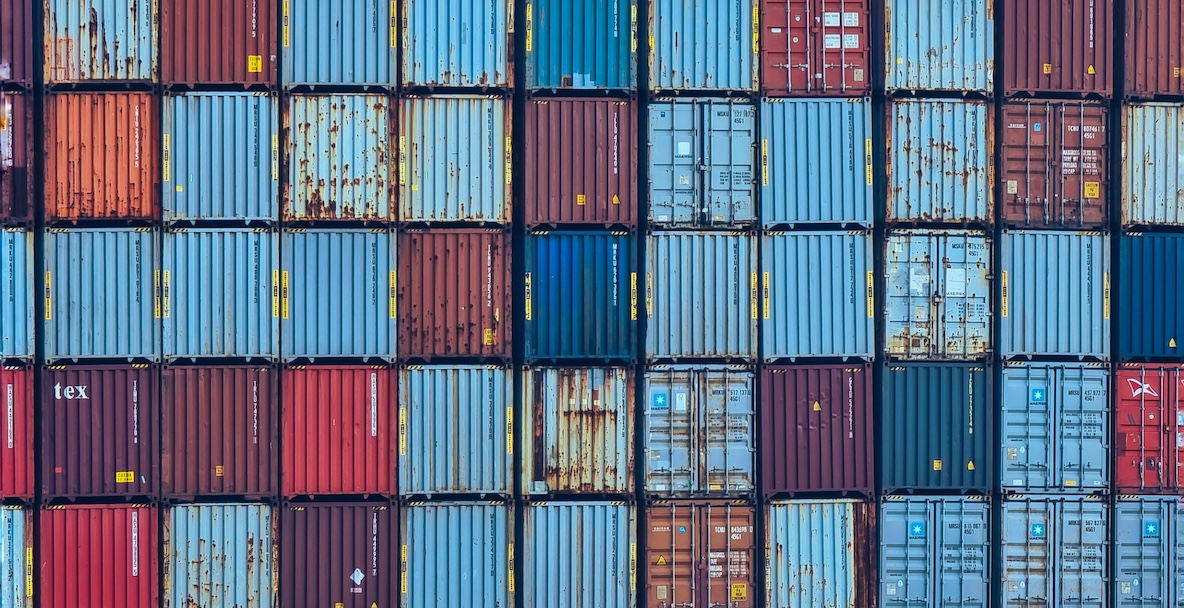
China to allow some exemptions under export controls: November 3, 2025
The semiconductor saga surrounding Nexperia has entered a new chapter. Recent developments over the weekend could lead to a resolution that has upended the auto industry.
The Chinese parent firm of Nexperia, Wingtech, has appointed Sophie Shen Xinjia as its new President. A Columbia Law School graduate with a background in Nexperia’s general counsel, her appointment is a move to both restore normalcy in the company’s currently fractured structure and hopefully a step closer to ending the ongoing dispute.
Simultaneously, diplomatic activity has helped lay the foundation for what could be a path to a much-needed resolution. Following talks between Presidents Donald Trump and Xi Jinping, China agreed to a year-long postponement of its rare earth export controls while the U.S. paused its 50% affiliates rule.
This agreement came at the same time China’s Ministry of Commerce said it was “considering exempting some Nexperia orders from the export ban that it imposed amid turmoil in global supply chains.”
The Wall Street Journal reports Nexperia would resume sending chips under the same framework agreement discussed by Presidents Trump and Xi. A statement on the situation is expected to be released by the White House late on Friday. Meanwhile, Beijing said it would work to provide exemptions for companies that apply.
“As a responsible major country, China fully considers the security and stability of domestic and international supply chains,” according to a statement Saturday from China’s Ministry of Commerce. “We will comprehensively consider the actual situation of the companies and grant exemptions to eligible exports.”
The automotive industry has rallied since the announcement was made. A U.S.-based auto group called the agreement “obviously, a positive resolution to a potentially disruptive situation that should keep the U.S. and global automaking on track.”
However, European groups are not as positive. While talks have made way for the continuation of product flow, the crisis has not been completely resolved.
“A number of practical questions remain as to how the exemption for export controls will be granted,” said a statement from the European Automobile Manufacturers’ Association. “Until the secure flow of goods begins again, the situation will remain critical.”
The separated units of Chinese and Dutch Nexperia still exist. Dutch Nexperia has not resumed wafer shipments to its Dongguan facility, and although the Chinese unit claims it has sufficient supply, it is unclear how long this will last.
Nexperia’s Chinese unit released a statement on Sunday via its WeChat account, stating that it had “multiple contingency plans as well as sufficient inventory to ensure a secure and reliable chip supply.”
As a callback to the Dutch Nexperia unit’s earlier customer letter, the same concerns over the authenticity and quality of the Dongguan products persist. However, according to some automakers, the worst-case scenario of line-down operations has been avoided for the moment.
Likewise, these changes do not imply a complete recovery immediately. Shipments will resume under specific exemptions and criteria, allowing volumes to ramp up gradually. Similarly, lead times remain elongated, and alternatives remain attractive.
Furthermore, we don’t know which parts are available for export. China’s exemptions cover “eligible exports” from Nexperia’s Chinese operations, but specific part numbers and volumes have not been publicly detailed. The U.S.–China trade truce is still fragile. If political winds shift, supply disruptions could re-escalate.
While this is good news after a string of bad, it does not mean the storm has passed. Companies must continue to secure alternatives in case the situation rapidly deteriorates. The Chinese and Dutch units have still not reached a conclusion and remain divided. Hopefully, upcoming talks between the two countries will find a way forward.
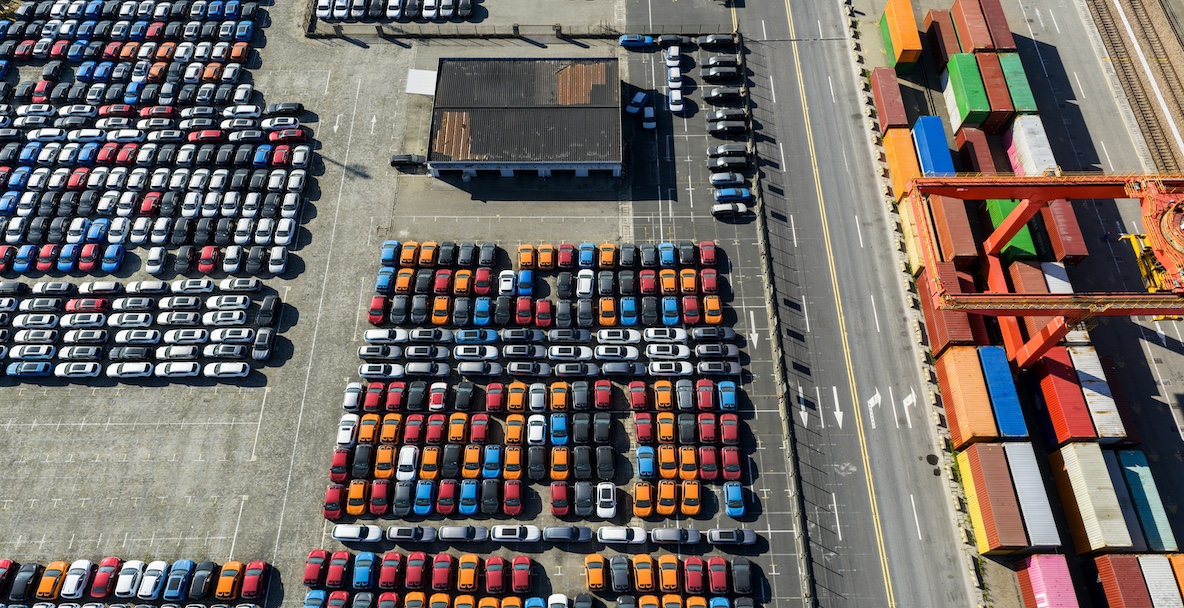
Nexperia halts wafer shipments to China unit: October 31, 2025
Starting October 26th, the Nexperia Dutch unit formally suspended wafer shipments to its Chinese assembly plant.
In a letter issued to customers by interim CEO Stefan Tilger, Nexperia has halted all wafer transfers to its Guangdong-based facility, citing “recent failures” by the local management to fulfill contractual payment obligations. The move severs the operational link between Nexperia’s European wafer fabrication sites and its Chinese back-end assembly operations. The Dongguan facility has already begun reducing hours, according to workers, which suggests that they are limited in the materials available to them.
While Dongguan accounts for roughly 80% of the company’s final product capacity, its wafers are primarily produced at its other plants in Europe, specifically Hamburg.
This development follows weeks of intensifying corporate and geopolitical conflict after the Dutch government assumed control of Nexperia. Wingtech, in turn, continues to push back, contesting the ousting of its founder and CEO, Zhang Xuezheng. The Chinese government has responded with export controls, escalating what has now become a two-way freeze on Nexperia’s parts.
The European Union’s tech chief, Henna Virkkunen, is expected to meet with Nexperia executives in the coming days to discuss resolutions. Unfortunately, industry observers are not optimistic that a breakthrough will be discovered quickly, given the intense diplomatic stakes at play. This will be especially challenging for the automotive industry, which has been frantically securing as many parts as possible from Nexperia and its competitors.
Honda has already announced its intention to halt operations at its North American plant, resulting in a reduction in output. Nissan, on the other hand, has confirmed that it remains “safe until the end of next week,” while Mercedes-Benz said it was “covered in the short term as it looked for alternates.” The German Association of the Automotive Industry (VDA) said on Thursday it feared “significant production restrictions in the near future, and possibly even production stoppages if the Nexperia situation could not be resolved soon.”
In Japan, Masanori Katayama, chairman of the Japan Automobile Manufacturers Association and CEO of Isuzu Motors, warned that the disruption at Nexperia “will have a serious impact on global production.”
Comparatively, Toyota has prepared for disruptions of any sort, acknowledging the risk, but it won’t lead to a shutdown. Toyota CEO Koji Sato told Automotive News that, “We don’t see any big damage for Toyota…There is a little risk, but it’s not going to cause a big shortage of semiconductors all of a sudden. We have more serious issues on a day-to-day basis than this.”
Nexperia franchise partners outside of China report near-total depletion of stock as Tier 1 suppliers pull forward orders. The reason is to avoid production stoppages, but that might be an inevitable future given the sudden spike in demand. Organizations are pivoting to alternative manufacturers, with rushed demand impacting competitors such as Onsemi, Vishay, STMicroelectronics, Infineon, and others.
With Nexperia’s Dongguan plant immobilized due to the wafer cutoff, Nexperia China will be unable to fulfill its agreements with domestic companies. Likewise, depending on how long the situation takes to resolve, this would add another layer of complexity when the plant officially resumes production. Semiconductor manufacturing is not a simple matter of turning a switch on and off. It takes weeks for a facility to return to its full production capacity.
Unless a coordinated political and commercial resolution emerges soon, the industry will face the prospect of a lasting shortage that cannot be resolved until high-level intervention occurs.

Wingtech calls for reinstatement of previous CEO: October 30, 2025
The standoff over Nexperia has taken a sharper turn this week as automakers sounded the alarm. Reports indicate that pressure is mounting on the Dutch government to reverse or soften its takeover of Nexperia. This pressure comes after the summit between Presidents Xi and Trump, with Washington agreeing to pause the recently introduced rule that would have extended Entity List restrictions to 50%-owned subsidiaries. That pause, according to reports, has intensified Chinese diplomatic efforts to press the Netherlands to surrender control of the company.
Wingtech has stated that any deal to restart Nexperia exports from China must include reinstating the company’s former executive officer. An official spokesperson for the company comments that the Dutch government must also reject its claims that the former CEO stole technology.
“It is difficult to escape the conclusion that they have identified Zhang as a soft target whose removal could be publicized as a win,” the Wingtech spokesperson said in a statement, adding that “restoring full control and ownership rights was necessary to defuse the tension and restore stability.”
Conversely, the Ministry of Economic Affairs in the Netherlands argued that “The actions of the CEO posed an acute threat to the continuity of production capacity, knowledge, and intellectual property [at Nexperia].”
The Ministry also said that Zhang’s moves represented “misuse of financial resources for the CEO’s self-enrichment as well as his other companies in China.”
Wingtech denied the accusation of stealing, calling it misinformation.
“There is no ‘technology transfer’ or ‘technology theft,’ nor is there any so-called ‘transmission of company secrets…Furthermore, Wingtech Technology is the lawful controlling shareholder of Nexperia, and Nexperia is a wholly owned subsidiary, there is no need, nor any basis, to ‘steal’ technology from a subsidiary.”
Meanwhile, the automotive industry’s operational alarm bells are ringing. Nissan senior executives have publicly warned that their chip inventories are perilously low and could run out within weeks unless supply stabilizes. Honda has also announced its plan for some production cuts and adjusted hours in preparation for supply scarcity. Stellantis has set up its own “war room” dedicated to monitoring the growing impact of Nexperia’s division.
“De-escalating the trade war, and perhaps even more important, the tech war, is of huge importance for the world economy, which got terribly hit by the shocks and the uncertainty triggered by the US president after April 2,” said Rolf J. Langhammer, a researcher at the Kiel Institute for the World Economy in Germany.
In the absence of a definitive political settlement, businesses should assume that the availability of discrete components will remain tight, and that production interruptions are a realistic possibility in the coming weeks.

Nexperia scales down production at Dongguan: October 29, 2025
Nexperia has sharply reduced output at its Dongguan assembly and testing plant following continued fallout from the Dutch government’s seizure.
Nexperia China has reportedly idled approximately one-third of its production equipment due to declining access to key materials and wafers, which are typically sourced from Nexperia’s European fabs. Three employees told South China Morning Post that the company was also reducing hours.
“The machines rarely stopped. They were kept running even during the holidays,” the worker said. The employee added that the stoppage was highly unusual.
Similarly, recruitment posters that previously hung outside the facility have been removed. This also suggests a hiring freeze is affecting the facility, as workers have had their hours cut.
For the rest of Nexperia, which relies heavily on its Chinese facilities for packaging and testing, the reduction could eliminate a significant share of its finished goods capacity within weeks.
The effects are already spreading through the automotive sector. Reuters reports that Nexperia’s central role in supplying components has positioned it at the heart of a new automotive chip crisis. Unlike the 2020-2022 shortage, which stemmed from broad capacity constraints, the current situation is driven by geopolitical factors.
Automotive manufacturers in multiple regions are now warning of potential production halts. In Brazil, government and industry officials have begun preparing for possible stoppages among local automakers. According to DigiTimes, the Brazilian government is exploring emergency import measures and alternative sourcing strategies to offset the sudden supply reduction from Asia.
Meanwhile, in North America and Europe, several major carmakers, such as Honda, have begun adjusting production schedules. A Wall Street Journal report confirms that some automakers have already initiated short-term production stoppages as component inventories run dry, particularly for high-volume analog and discrete devices.
“These are not very strategic components, but there are hundreds of them, small microprocessors in the lock systems, climate control, speedometers or whatever,” Volvo Chief Executive Håkan Samuelsson told The Wall Street Journal.
While negotiations between China and the Netherlands are reportedly ongoing, the near-term outlook remains highly uncertain. Likewise, the situation cannot be easily resolved by members of the supply chain but requires government intervention.
“It’s something that is going to be solved on a very high level outside our control,” Volvo’s Samuelsson said.
“A very quick breakthrough is necessary to avoid fourth quarter production losses,” said Ford COO Kumar Galhotra. “Not just for us, but for the entire industry.”
According to Reuters, Nexperia is in contact with the Chinese and U.S. governments over export rules. At the same time, Wingtech says the issue can only be resolved by restoring its "full control and ownership rights.”

Rift deepens between China and Dutch Nexperia: October 28, 2025
According to new information, the Dutch government’s decision to seize control of Nexperia was driven by mounting fears that the company’s former leadership under Wingtech founder Zhang Xuezheng had begun transferring assets, personnel, and intellectual property from Europe to China.
Statements say that “Wingtech’s controlling shareholder Zhang Xuezheng’s moved to build a new fab in Shanghai held outside both Wingtech and Nexperia. Documents show he insisted that Nexperia place large orders from the plant, which European staff said they did not need.”
Dutch officials reportedly believed that Nexperia was being “gutted,” citing plans to cut up to 40% of European staff, shutter the Munich R&D center, and relocate specialized manufacturing equipment from Hamburg to China. In response, the Netherlands invoked its rarely used Goods Availability Act. This granted the Dutch government emergency powers to safeguard national semiconductor interests and halt actions that could weaken domestic technology capabilities.
China has sharply denounced the move, calling it “illegal seizure” and “economic coercion.” Wingtech has warned that cutting the European arm off from its China-based production and packaging infrastructure poses an existential threat, as roughly 80% of Nexperia’s packaging and testing capacity resides in China.
A Wingtech spokesperson said Nexperia would lose the majority of its “back-end capacity,” by separating. “This massive capacity gap cannot be filled by Europe or other regions in the foreseeable future.”
Chinese authorities have also accused the Dutch-controlled entity of spreading misinformation to customers. The opposing sides have led to confusion and volatility among its internal staff and customers. Nexperia China has stated in an official announcement that “the decision by the company’s Dutch headquarters to dismiss John Chang from his position as Vice President of Global Sales and Marketing is not legally valid in China.”
The statement, published on Nexperia China’s WeChat account, went on to say that “All business activities conducted by John Chang, including contract signing, agreement execution, management instructions, and external commitments should be regarded as formal acts of Nexperia China with full legal effect.”
Sources report that the Dutch government believes it can negotiate a resolution with China that will restore the company to a unified position. However, with ongoing tensions, alongside these claims, Chinese leadership might fight back. During the nearly month-long stand-off, Nexperia’s Chinese unit has claimed Nexperia’s Dutch leadership has been spreading misinformation. This latest report might reignite those flames.
“The actions of the Dutch government appear to be aimed at allowing a new Dutch-owned company to take Nexperia over,” said the Wingtech spokesperson. “However, any Nexperia-successor company is doomed to fail. The customers simply won’t follow the new company.”
For the global semiconductor ecosystem, the Nexperia dispute currently marks one of the most consequential supply chain disruptions since the pandemic. Suppose negotiations between China and the Netherlands fail to produce a resolution soon. In that case, the impact will extend well beyond Nexperia, with prices and lead times extending out, possibly leading to major shortage conditions in the discrete semiconductor market after two years of hard-fought recovery.

Nexperia parent Wingtech sees risk despite boom: October 27, 2025
A potential resolution on the horizon for Nexperia? Maybe. According to sources, Wingtech Technology, Nexperia’s Chinese parent company, could be removed from the U.S. Department of Commerce’s BIS Entity List soon.
According to multiple sources, Nexperia has communicated this possibility to select franchised distributors and direct customers. If confirmed, this development could ease some of the operational and supply restrictions that have exploded since the Dutch seizure of Nexperia.
However, the delisting process is neither automatic nor immediate. Wingtech would first need to formally apply for removal, a process that can take several months to a year, depending on case complexity. Likewise, applications are not made public until approvals are finalized. So far, there has been no mention of Wingtech’s application, indicating that approval has not yet been granted.
Even if progress toward delisting begins, geopolitical tensions between China and the Netherlands remain unresolved. As reported by Tom’s Hardware and Reuters, Nexperia’s China operations have reduced output amid the ongoing standoff following the Dutch government’s court-backed seizure of the company. Despite a strong Q3 profit surge, Wingtech has flagged cash flow risks stemming from restricted export activity and internal governance issues.
"Should control over Nexperia fail to be restored by the end of 2025, the company may face the risk of a temporary reduction in revenue, profits, and cash flow," Wingtech warned.
These remarks came as Wingtech posted a 280% profit boost, a mighty gain, but saw revenue decline by 77%. The company attributed the revenue decline to a drop in "product integration" following Wingtech's addition to the US export control list in December. The company said another reason for the revenue decline was the divestment of four subsidiaries in that business, resulting in a further year-on-year decrease in revenue.”
Automotive manufacturers remain alert to the fallout. Reuters reports that Volkswagen has secured production for the coming week but warns of short-term impacts if the situation deteriorates. Other OEMs are taking a similar stance, maintaining elevated inventory levels, and closely monitoring the availability of discrete components.
Market conditions continue to reflect this uncertainty. Nexperia part shortages remain widespread, particularly across automotive supply chains, and auto parts distributor Bosch is preparing to furlough staff at its Salzgitter plant if a solution is not reached soon.
“We are currently doing everything we can to serve our customers and avoid or minimise production restrictions,” a Bosch spokesperson said in an emailed statement to the Reuters news agency.
“We have not yet made any adjustments to working hours at our German locations, but are preparing to do so, particularly in Salzgitter.”

Nexperia's China and Dutch battle continues: Oct 24, Update
According to new reports, the growing rift between Nexperia’s Chinese and Dutch entities has deepened. Chinese management has reportedly refused to comply with orders from the Netherlands-based headquarters, including a directive to dismiss Vice President John Chang, claiming that the instruction violated Chinese labor laws.
In a report by Tom’s Hardware, “Nexperia hasn’t given any reason for Chang’s ouster as VP, which is probably why the Chinese subsidiary has refused to recognize this order.”
Nexperia’s China unit has resumed chip sales to domestic distributors, while Nexperia’s Dutch leadership has ordered a pause. The report went on, “Even though both parties claim the business is running as usual…it’s expected that only 30% of the company’s output is available to the global market, with the rest seemingly trapped in China until the situation is resolved.”
Likewise, there is a possibility of extending export restrictions to products beyond Nexperia. During a recent check-in, Sourceability’s team noted an unusual event involving a China-based OEM that abruptly retracted an order, citing advice from China Customs not to ship the components. While this may be an isolated case, it suggests that broader trade restrictions or customs interventions may be emerging, potentially affecting non-Chinese brands as well.
On the supply side, Nexperia shortages are intensifying, particularly for high-demand discrete parts including BAT54S, 215 and BAT46WJ, 115. Demand remains strongest in the automotive and industrial sectors, where production schedules are most vulnerable to disruption. Automakers and Tier 1 suppliers continue to secure remaining inventory, further straining the global discrete semiconductor market.
Industry observers warn that if the current impasse continues, the situation could escalate into a broader cross-border export slowdown. Should the ongoing dispute continue, a deep structural supply disruption will have long-term consequences for global manufacturing.

October 23, 2025 Update
The situation is growing more complex as contradictory orders from Dutch and Chinese leadership leave Nexperia employees and customers scrambling for stability. The impact has been particularly severe in the discrete components segment, where Nexperia is a leading supplier. Other manufacturers, including onsemi, Diodes, Vishay, Littelfuse, STMicroelectronics, MCC, and Infineon, are now experiencing heightened demand as customers scramble for alternatives.
According to recent reports from The Guardian and South China Morning Post, the situation has become increasingly tense. Nexperia has stated to customers, “At this time, Nexperia cannot guarantee that Nexperia intellectual property, technology, and authenticity or quality standards…are being used in the manufacturing of your products at the ATGD Dongguan facility. Therefore, we highly recommend not to accept any delivery of and/or use these parts.”
The letter went on to say that the potential issues with the products from the ATGD Dongguan site could include, but are not limited to:
- Potential changes in product specifications, since Nexperia cannot guarantee the wafers used for production are authentic Nexperia wafers
- Use of alternative materials
- Deviations from Nexperia’s quality assurance processes
- Products that differ from Nexperia’s specifications and datasheets
The letter concludes that messages circulated by individuals at Nexperia China entities claiming that they are abandoning the Chinese market are factually incorrect and misleading.
Meanwhile, Chinese state officials accused the Dutch entity of spreading “misinformation” to customers. Inside China, Nexperia’s local leadership has instructed teams to continue operations independently, deepening the operational split within the company. An anonymous source from within the company said the situation has been “chaotic.”
As confusion grows, a chain reaction has spread across global supply chains. Tier 1, sub-tier, automotive OEMs such as Volvo, Volkswagen, General Motors, Mercedes-Benz, Hyundai, and Rivian, and EMS companies are “hoovering up" available inventory to secure supply for upcoming quarters. The surge in demand has rapidly expanded beyond automotive into consumer electronics, communications, and medical device manufacturing, leading to broad market tightening.
Industry sources confirm that lead times for discrete components have increased by 6 to 8 weeks, while prices have risen by 5% to 20%, depending on component type and region. Supply chain managers and procurement teams are now revisiting sourcing strategies last used during the COVID pandemic. In fact, some automakers have stated concerns that there could be a repeat of cars sitting in lots, waiting for parts, as seen during the 2020-2022 semiconductor shortage.
Despite ongoing talks between the Dutch and Chinese governments to defuse the crisis, near-term relief appears unlikely. Fearing a lack of availability for Q1, some companies are buying stock to carry them through the first part of 2026. The shared feeling among them is that they would rather pay the inventory costs to house their excess parts than face long lead times and higher prices later.
The developing situation around Nexperia represents more than a single-company crisis. The geopoliticalization of the semiconductor supply chain has grown over the last several years, triggered by the global pandemic. Since semiconductors play such an essential role in the national security and economic success of many countries, the likelihood of continued restrictions amid rising trade tensions is high.
The situation is still fluid, and Sourceability will continue monitoring for future updates.
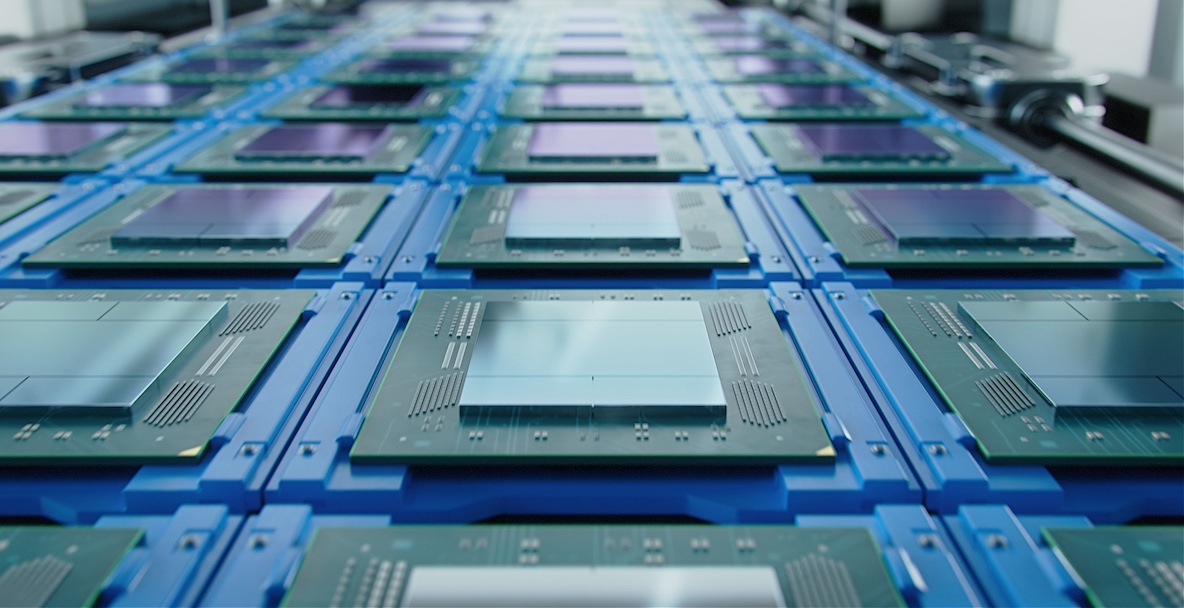
October 15, 2025 Update
What started as a national security dispute in the Netherlands is now rippling across the global chip market.
The semiconductor world was jolted on October 9, 2025, by a dramatic policy shift. China imposed export restrictions on components manufactured by Nexperia’s China facilities. The move prohibited components produced in China, including Nexperia’s high-volume 80k-square-meter assembly site in Guangdong, from leaving the country.
This facility is one of Nexperia’s three assembly and testing centers, complementing its wafer fabrication plants in Germany and the United Kingdom. Upon the announcement, uncertainty descended on the semiconductor supply chain, leading to an influx of orders. However, Nexperia quickly issued instructions to its partners to withhold distributing parts, regardless of country of origin (COO), as the situation was addressed.
The semiconductor supply chain is grappling with surging demand, with no clear way forward as the situation develops.
Mounting pressures led to government action
The saga begins with the Dutch government’s recent intervention into Nexperia’s governance, citing “serious administrative shortcomings” and concerns over the continuity of critical chip production. Netherlands officials invoked a rarely used Cold War–era law to suspend Chinese control of Nexperia’s operations.
In the last year, tensions between the U.S. and China have been growing. Retaliatory tit-for-tat restrictions have grown more common since the introduction of the popular artificial intelligence (AI) model, ChatGPT. Since the global semiconductor shortage, countries have been working hard to boost domestic semiconductor manufacturing capabilities. Likewise, some countries have become more protective of what they excel in. For the United States, that is advanced semiconductor design.
Washington, under Biden and now Trump, continues to include companies on its “Entity List.” This list subjects members to additional licensing requirements for exports, re-exports, or transfers of items, as determined by the U.S. government. Inclusion on the Bureau of Industry and Security (BIS) list signals that the listed entity poses a risk to U.S. national security or foreign policy interests and requires a license before engaging in transactions involving U.S.-origin items.
Recently, several companies, including Arrow China and Arrow Electronics Hong Kong, have been added to the list. As one of the biggest distributors of electronic components, Arrow’s inclusion has made many organizations more wary.
Simultaneously, U.S. President Donald Trump has been ramping up pressure on Chinese tech firms. Wingtech, Nexperia’s parent company, has been on the U.S. entity list for some time. On October 1st, an Amsterdam commercial court ruled to suspend Wingtech CEO Zhang Xuezheng from his position as executive director at Nexperia. The court cited “well-founded reasons to doubt that the company was pursuing correct management policy or actions under Dutch civil law.”
Reuters notes that the court “Appointed Dutch businessman Guido Dierick to take Zhang's position with a 'deciding vote', and transferred control of almost all of Nexperia's shares to a Dutch lawyer for management.”
Wingtech protested the move, calling it discriminatory and politically driven. On Sunday, the company said it was consulting with lawyers and seeking government support to “protect the legitimate rights and interests of the company.”
Soon after, Chinese authorities barred Nexperia and its subcontractors from exporting China-assembled components. The restriction covers finished goods and subassemblies produced in China. Meanwhile, Nexperia components manufactured in other regions remain unaffected
Nexperia has said it is actively negotiating with both U.S. and Chinese authorities to try to lift or limit the controls. However, the situation is still ongoing. In the interim, Nexperia has advised its partners to hold stock, no matter where its COO is based.
Immediate risks: Lead Times, prices, and uncertainty
In the days after the announcement, orders for Nexperia parts surged. As one of the largest producers of components, the impacts across the market have quickly translated into harsh pricing adjustments.
With demand spiking, the supply cushion is rapidly shrinking, and allocation risk is rising. Even Nexperia components not originating in China are under upward pricing pressure. The rush to secure inventory is pushing margins and costs higher.
There’s no published timeline or pathway to resolution. Without that clarity, market volatility and speculative moves will continue to drive stress across procurement teams. Companies that depend heavily on a single supplier region now face heightened risk. The control move signals how quickly policy can choke off access. With rising geopolitical tensions and shifting U.S. trade policies, some organizations dependent on sole sources could face greater disruptions.
The Nexperia case illustrates several broader shifts:
- Nations are increasingly willing to intervene in supply chains for strategic assets, even at the expense of market norms.
- The U.S.-China trade war reflects an evolving playbook: using bans and restrictions to counter external pressures or reassert leverage.
- Companies will need agile, diversified architectures as trade policies impact the global supply chain.
- No manufacturer is entirely immune. If tensions escalate or ownership structures shift, export controls may cascade beyond Nexperia.
How to mitigate the disruption
While the decision has taken the global semiconductor supply chain by surprise, the recent Nexperia export controls underscore the crucial importance of proactive mitigation. In the coming days, while uncertainty brews, organizations must take several key steps.
- Identify critical SKUs that may be affected by export controls.
- Evaluate substitutable manufacturers now while supply is still available.
- Discuss allocation flexibility and cost with your suppliers.
- Accept that this is a fluid environment and monitor trusted sources for updates.
The export restrictions against China-assembled Nexperia parts represent more than a supply disruption. Recent policies have been reflective of how geopolitical maneuvering can upend whole product ecosystems overnight. While some firms may treat it as a short-term crunch, for many, this is a structural inflection point in semiconductor supply chain risk.
As a global organization with distribution hubs in Hungary, Singapore, and the United States, Sourceability knows how complex the semiconductor supply chain has become. Throw in geopolitical tensions, and the worldwide supply chain becomes more prone to disruption as administrations change every few years.
To help our partners mitigate the worst of this market disruption and strengthen supply chain resilience, we are using our global inventory to lock in supplies before shortages intensify. Likewise, our partners, Alpha and Omega Semiconductor, Panjit, Yuanjie, MCC, and UTC, offer viable, cost-effective alternatives for Nexperia parts for solutions needed now. Our global team is proactively engaging OEMs and EMS partners with Nexperia exposure to assess demand, propose swaps, and manage expectations.
Since the situation is evolving daily, we are committed to keeping you informed. Let us partner with you to transform reactive stress into a strategic opportunity.





